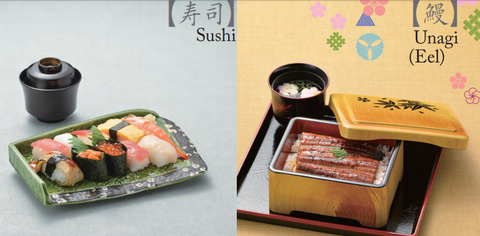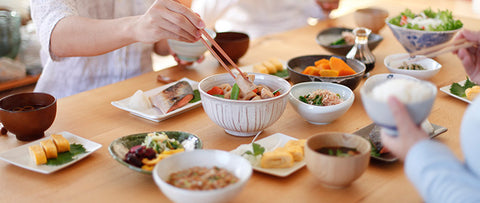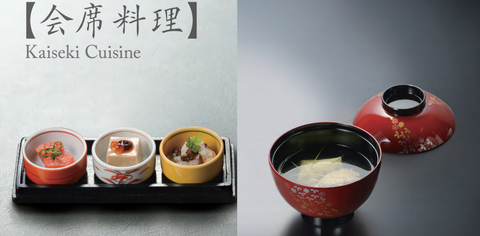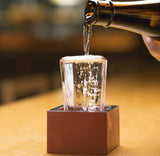About Japanese tableware

But beware of lacquerware! In many shops and on many online stores, lacquerware refers to a category of dishes that was traditionally in lacquer but that is nowadays in plastic. So if you are looking for real lacquer, pay close attention to the features. If there aren’t any, don’t buy and find a Japanese shop where all is clearly described. On Akazuki.com, we are always clear on the materials, even detailing when possible the kind of plastic used.
Shapes and sizes
 Traditionally, Japanese tableware and dinnerware comes in many shapes and many sizes. From the tiny plate for condiments to the big Japanese bowls like ramen bowls, you can find also Japanese bowls with lids. Just have a look at our catalog and check it out.
Traditionally, Japanese tableware and dinnerware comes in many shapes and many sizes. From the tiny plate for condiments to the big Japanese bowls like ramen bowls, you can find also Japanese bowls with lids. Just have a look at our catalog and check it out.
The Japanese meal is very different than the western one. In Japan, there is no specific order. Forget about entrees, appetizers, main dishes… Everything is on the table to eat at the same time. Japanese use mainly small dishes to eat. If you see a big size plate, it is usually used here as a serving dish.
Usually, Japanese share a dish and help themselves on a small plate or bowl with their chopsticks.
 Lacquer ware bowls are usually for small Japanese soups like miso soup or to put a sauce in which you dip soba. The ceramic chawan rice bowls or rice-based dishes like the don. You will always see on a Japanese table a small plate that fits in the palm of your hand that is used for condiments, soy sauce, etc. The regular “eating” Japanese plates and sushi plates size are about as long as your hand (regular size) and can be flat or curvy/bend like a short bowl. Bigger plates from all sizes and shapes are used to serve food and are placed in the center.
Lacquer ware bowls are usually for small Japanese soups like miso soup or to put a sauce in which you dip soba. The ceramic chawan rice bowls or rice-based dishes like the don. You will always see on a Japanese table a small plate that fits in the palm of your hand that is used for condiments, soy sauce, etc. The regular “eating” Japanese plates and sushi plates size are about as long as your hand (regular size) and can be flat or curvy/bend like a short bowl. Bigger plates from all sizes and shapes are used to serve food and are placed in the center.
Also, Japan has a long tradition of making Japanese glasses for any kind of drinks like beers or saké.
Even though these Japanese tableware items have been designed for Japanese cuisine, western food will look also look great. Please pay attention to the description of the product to understand well the size of the product. Usually as written before, the traditional Japanese portion is quite small as they eat many different small quantities of many things instead of one big portion of one or two things like westerners do. The dishes can be quite small but we are always as clear as possible in the description.
Japanese manners
In Japan, rice is like bread for French. It is always on the side of almost any dish. The proper manner to eat the rice is to take the rice bowl in one hand and chopsticks in another and lift it to your mouth, while taking your chopsticks to “scoop” the rice into your mouth. Usually you lift small bowls of rice or soup when you eat. It prevents you from dropping food. When you do not get a soup spoon, it is proper to sip the soup out of the bowl and eat the solid food with chopsticks. Usually Japanese will hold their bowl with one finger on top and the others under in order not to burn themselves.
Eating big pieces of food prove to be harder as it requires you to maneuver your chopsticks well. The best would be to cut the pieces with chopsticks (holding them in one hand) and pop the smaller pieces into your mouth. The easiest (the one I usually practice) is to just bite off a piece and put the rest on your plate.
For the chopsticks’ manners, please refer to the Japanese chopsticks collection.
SHARE:

